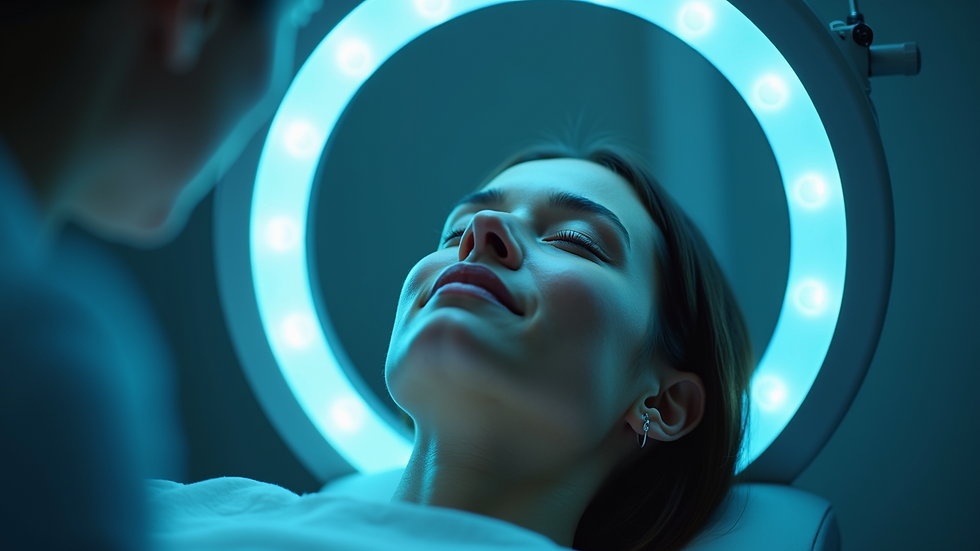In recent years, LED light therapy has gained significant attention for its potential to improve skin health, reduce inflammation, and promote healing. This non-invasive treatment utilizes specific wavelengths of light to bring about physiological changes in the skin. From celebrities to regular users, many are turning to this modern solution for skin and health concerns. But what is the science behind it? This post will delve into the fundamentals of LED therapy, its applications, and what makes it effective.
LED Therapy: The Basics
LED (Light Emitting Diode) therapy involves the use of light to penetrate the skin at varying depths depending on the wavelength. Different colors of light provide unique benefits:
Red Light: Known for its anti-aging properties, it stimulates collagen production and improves skin tone.
Blue Light: Effective for acne treatment, blue light can kill acne-causing bacteria and reduce oil production.
Near-Infrared Light: This penetrates deeper tissues and is used for pain relief and inflammation reduction.
Studies have shown that these lights can enhance cellular function and promote healing by stimulating ATP (adenosine triphosphate) production in cells. Consequently, individuals may notice a reduction in wrinkles, improved skin texture, and a decrease in inflammation.

Mechanism of Action
LED light therapy works through a process known as photobiomodulation. When the light is absorbed by the skin, it triggers a series of metabolic events at the cellular level.
Absorption of Light: Photoreceptors in the skin absorb LED light, especially in the red and near-infrared spectrum.
Increased ATP Production: The absorbed light stimulates the mitochondria in cells, leading to increased production of ATP, the energy currency of cells. This boost in energy enhances cellular functions, such as repair and regeneration.
Enhanced Collagen Production: The stimulation of fibroblasts, the cells responsible for collagen synthesis, results in the formation of new collagen, essential for youthful and plump skin.
Research indicates that regular treatment can lead to lasting improvements in skin health and a reduction in pigmentation, making it a popular choice among aesthetics professionals.

What Light Therapy Does Kim Kardashian Use?
Kim Kardashian, a well-known advocate for skincare and beauty innovations, has publicly embraced LED light therapy. Reports suggest that she utilizes various systems, one of which includes an at-home mask designed for personal use. This mask employs red and near-infrared light to enhance skin health and slow down the aging process.
Kim's commitment to this therapy has also drawn attention to its benefits and effectiveness. Numerous beauty influencers have echoed her support, highlighting that LED therapy can be a convenient and effective method to achieve aesthetic goals without invasive procedures.
Regular use, as Kim demonstrates, may lead to improved skin vitality and a reduction in wrinkles, making it a staple in her skincare arsenal.
Applications of LED Light Therapy
LED light therapy can treat several skin conditions and offer various benefits. Some common applications include:
Acne Treatment: By harnessing blue light’s bacteria-destroying properties, LED therapy can help clear existing breakouts and prevent future ones by regulating sebaceous gland activity.
Anti-Aging Effects: Red light therapy enhances collagen production, reducing the appearance of fine lines and wrinkles, leading to a more youthful complexion.
Wound Healing: The therapy promotes tissue repair, making it effective for treating scars, sun damage, and other skin abrasions.
Pain Relief and Inflammation: Certain wavelengths can penetrate deeper tissues to alleviate inflammation and pain, providing benefits for conditions like joint pain or muscle soreness, making treatments like celluma light therapy increasingly appealing for those seeking non-invasive pain management.

Effectiveness and Safety
One primary advantage of LED light therapy is its safety. It is non-invasive and painless, with minimal side effects. Research highlights that the treatment is suitable for various skin types and does not involve UV radiation, which can cause skin damage.
Nonetheless, while LED therapy is generally safe, it’s essential to follow guidelines and consult a healthcare provider before starting any treatment regimen. For optimal results, treatments may need to be done regularly—often multiple times a week initially—and then gradually reduced as skin improves.
Moreover, results can vary based on individual skin conditions and the device used. It's crucial to undergo the treatment with FDA-cleared devices to ensure safety and efficacy.
Getting Started: What to Expect
If you are considering LED light therapy, here are some steps to help you get started:
Consultation: Start with a consultation at a dermatology clinic or spa. A qualified professional can assess your skin type and individual needs, recommending the best treatment plan.
Choosing a Device: If you prefer home use, there are several FDA-approved devices available. Ensure they provide the specific wavelengths suitable for your needs.
Regular Treatments: For best results, commit to a treatment schedule. Initial sessions may be more frequent, followed by maintenance treatments.
Aftercare: After your session, keep your skin hydrated and protected from sun exposure to maximize benefits.
By understanding how LED therapy works and its potential benefits, individuals can make informed decisions about incorporating this technology into their skincare routine.
Embracing the Future of Skincare
LED light therapy represents a promising frontier in skincare and wellness. With a rich background of clinical research supporting its safety and efficacy, this technology is changing how individuals approach skin health and healing.
As ongoing studies continue to explore and validate the myriad benefits of light therapy, it’s likely that its integration into personal care routines will grow. Whether you're looking to treat acne, combat signs of aging, or even alleviate chronic pain, LED light therapy offers a versatile and effective solution worth considering.
With celebrities like Kim Kardashian leading the way, the shift toward a more scientific, non-invasive approach to beauty is clear. It’s an exciting time for skincare enthusiasts and practitioners alike as they delve deeper into the potential of LED therapy. So why not explore this innovative option for your skin health journey?

Comments